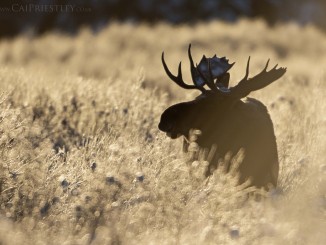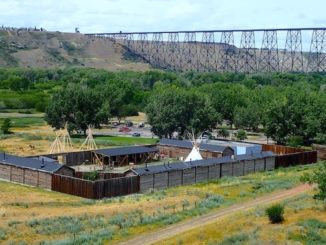At this time of year bears are busy trying to pack on those last few pounds before entering their dens for a long winter slumber. They’re on the lookout for easily accessible, calorie rich food and we have a duty to prevent them from indulging in unnatural food sources. Whenever we are in bear country we’re reminded of the importance of proper food and waste disposal so as not to attract hungry bears. There’s a popular saying, ‘a fed bear is a dead bear’, which simply means that food-conditioned or habituated bears typically become problem bears. Reminders to always place attractants in bear proof bins is commonplace, but how do we know for certain that those receptacles are truly bear proof? That’s where the most dedicated product testers in the industry come to work.
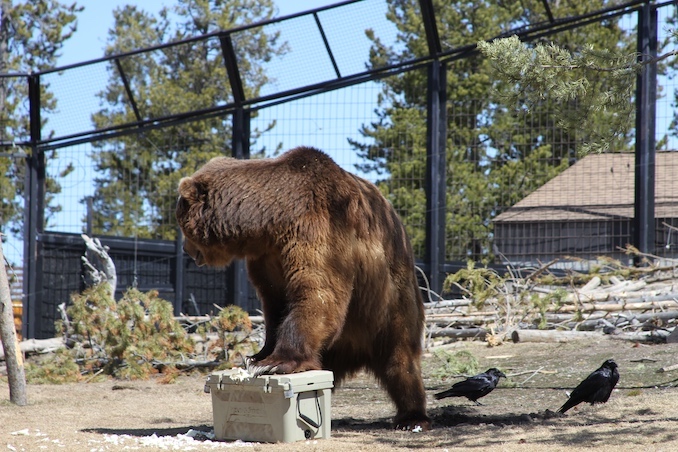
The not-for-profit Grizzly & Wolf Discovery Center (GWDC), situated on the doorstep of Yellowstone National Park, is home to eight Grizzly Bears, three packs of captive-born wolves, nearly a dozen non-releasable raptors, and a handful of North American River Otters. The bears all arrived at the center with one thing in common, they were food-conditioned or were the cubs of food-conditioned bears. Once a wild bear has obtained human food they can become a nuisance where they’ll destroy property or become aggressive towards people in their search for food. In these cases the bears can be relocated or placed in captivity if space is available. Unfortunately, many times these nuisance bears end up being euthanized. The bears at the center were lucky to be spared that fate and are now ambassadors for their wild cousins. But this is no free ride, they also have an important job to do.
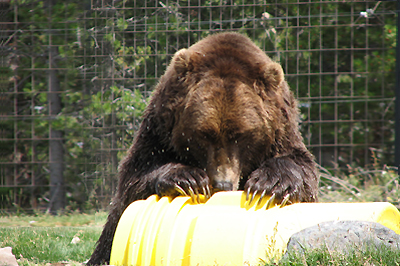
The bears at the GWDC are responsible for testing a host of products that are striving to be stamped with their seal of approval. For a fee, big-name manufacturers, like Coleman, Igloo, Otterbox, Pelican, Cabela’s, and Yeti just to name a few, can send their products to the GWDC and have them tested by real Grizzlies. The money helps support the GWDC conservation efforts and the costs associated with housing and feeding Grizzly Bears. At the end of the day, if you’re marketing a product as ‘bear-resistant’ or ‘bear-proof’ you want to be certain of your claims.
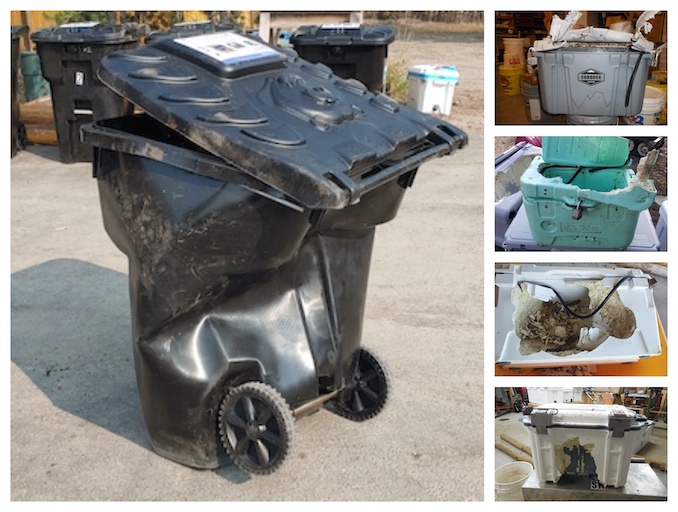
Randy Gravatt, the Product Testing Coordinator, has been with the GWDC for 20-plus years and has seen it all. These days he can almost tell just by looking at a product whether it’ll stand up to the beating or not, but he continues to fill the coolers, backpacking canisters, panniers, and trash cans with smelly, delicious rewards anyway. Gravatt takes the testing seriously because he knows what’s at stake. Wild bears are the ones that end up paying the ultimate price when they get into our food and the testing program is hoping to decrease this problem.
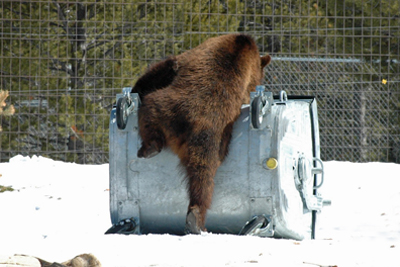
The process is simple, place the treat-filled item inside the bear’s enclosure, turn on the video-camera, start the timer, and watch the show. Using their powerful jaws, brute strength, and impressive claws, these 275-kilogram bears bite, claw, smash, and commonly use the CPR-method, which looks like they’re pumping up and down on the item with their front paws, in an attempt to gain access to the rewards. In order to pass the test, the item must withstand the bear’s advances for 60 minutes; the length of time a typical Grizzly in the wild would have given up. The damage a product sustains must remain within a specific standard, for example holes, tears, or gaps must be less than 2.5cm for garbage cans and under half a centimetre for food containers. The entire process is recorded so the manufacturers can see how well their item did. They also receive a detailed report from Gravatt. When the program first started Gravatt says only about 10% of products were passing the test, but these days that number has increased to about 65%, meaning manufacturers are learning and improving their products all the time.
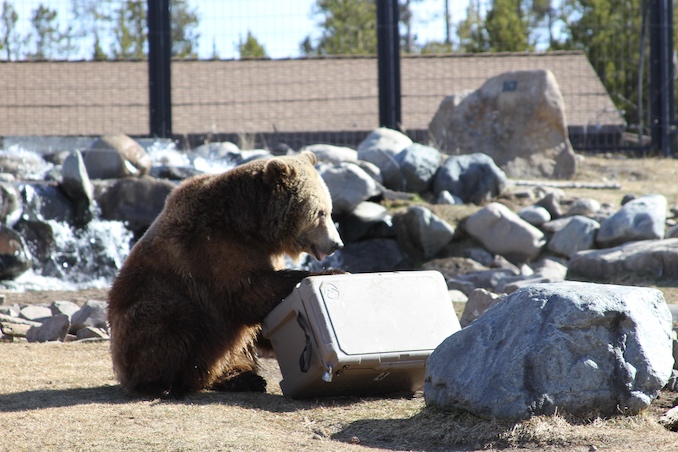
The GWDC is the only approved facility for testing products that can earn a certificate from the Interagency Grizzly Bear Committee (IGBC). When an item passes the test it receives a certification number that manufacturers can display and it is added to the IGBC’s Certified Products List, which is already comprised of about 450 products. The IGBC was formed in 1983 in response to dwindling Grizzly Bear populations in the Lower 48 and has proven to be a successful model for agencies by working cooperatively together and coordinating recovery efforts over multiple jurisdictions. So when your next backcountry adventure requires bear-proof items, you’ll know these products have been certified by the best testers in the biz!
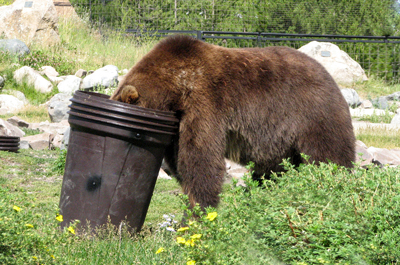
In a peculiar twist of fate, these Grizzly Bears that were once considered a nuisance and were likely on the verge of being destroyed, have been given a second chance. Although the bears at the GWDC will remain in captivity for the rest of their lives they are working hard at ensuring their wild brethren avoid the same fate, or worse.

For more information about the Product Testing Program or the Grizzly & Wolf Discovery Center, please visit their website. You can also connect with them on Facebook, Twitter, and Instagram. For additional posts about bears please see these previous stories, The Lair of the Grizzly Bear and Vintage Photographs of Bears from Across Alberta.


